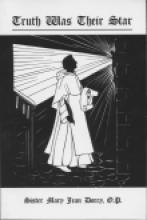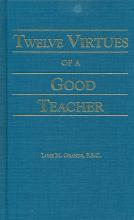No name
Tomie de Paola's Book of Bible Stories
Tomie de Paola is a unique illustrator with artwork in a woodcut or icon-like style (I can't decide which.) I thought his artwork was more suited to The Lady of Guadalupe but I like the content of his Bible stories and appreciate the "Index of Bible Text" in the back. This would be a suitable book for acquainting preschoolers with the major stories of the Bible.
I have found that some stories are a little hard to understand because too many details have been left out in making them simpler for young children. I was bothered by the fact that the Crucifixion scene is so simplified that both thieves mock Jesus - missing entirely one of the most beautiful stories in the Bible, of the good thief. Also, quite simply, I have a big pet peeve about stories and movies that turn a real-life good guy into a bad guy for the sake of the story or artistic license.
Toward Morning, A Story of the Hungarian Freedom Fighters
Traditional Logic
Trains
I really like it when authors of children's books remember that details of how things work are fascinating to children. Gail Gibbons is definitely one of those authors. Her book is filled with very simple illustrations and text about trains, but the various parts of the trains are labeled and the text explains things like how the trains link together and the differences between gondola cars, hopper cars, boxcars and tank cars.The back page contains a chart of signs and signals relating to trains. Appropriate for preschool or kindergarten age children.
Trans Europa
Trans Europa has a European map gameboard on which you connect major cities (chosen from the card deck) with "train tracks." It can be played on a simple level by younger children (the recommendation is 8 and up) but can involve rather complex strategies as well.
Each round takes only a few minutes (5 to 10 at the most) and several rounds combine to form an entire game. (There is a simple scoring system alongside the board used through an entire game.)
The materials are of good quality, nice colors and easy to sort out. We thought it was particularly interesting that the pronunciation and spelling of many of the cities are not those commonly used in the U.S. It might be beneficial to have a map of Europe on the wall with which to compare names and identify the country each city is located in.
Highly recommended!
Recommended for ages 8 and up, For 2 to 6 players
Game Board with cards and small wooden playing pieces
True to the Old Flag
Truth and Life Dramatized Audio Bible - New Testament
This is a beautifully-performed, professionally produced complete dramatization of the New Testament in the renowned Revised Standard Version, Catholic Edition (sometimes referred to as the Ignatius Bible). John Rhys-Davies (who plays Gimli in Peter Jackson's Lord of the Rings films) as narrator leads a great cast that includes Neal McDonough (Minority Report, Band of Brothers) as Jesus, Julia Ormond (Sabrina, First Knight) as Mary, Sean Astin (Sam in Peter Jackson's Lord of the Rings) as Matthew and Michael York (Jesus of Nazareth, Murder on the Orient Express) as Luke.
There was a time, not long ago, when such beautiful biblical resources for families were only found with the Protestant versions of the Bible. Happily that is no longer the case!
You can listen to free audio samples at the Ignatius Press website: Truth and Life Dramatized Audio Bible. This resource can be ordered on 18 CDs from many bookstores or it can be ordered as an audio download through Audible.com. Ignatius Press offers this in a special package that includes a bonus audio CD from Steve Ray (from the Footprints of God Series) on the Gospel of St. John.
Truth Was Their Star
My one and only complaint with the book is the inaccurate statement in the book that people thought that the world was flat during the time of Christopher Columbus. This can be easily corrected by pointing out to the child that this is untrue. Christopher Columbus believed that the world was round, and therefore was hoping to go to the east by sailing west.
Originally published in 1947, this paperback is 124 pages with a beautiful silhouette on the cover. The suggested reading level is Gr. 6 to adult, but I think a younger child - advanced 3rd grade, 4th or 5th - would enjoy the book. It would also make an ideal read aloud to a younger child.
Twelve Virtues of a Good Teacher
Based on twelve virtues that St. John Baptist de La Salle, patron saint of teachers, thought important for teachers to know, Twelve Virtues of a Good Teacher is a reprint from 1962 that elaborates on these virtues. St. John Baptist de La Salle was an educational reformer and founder of the Brothers of Christian Schools in France during the 17th Century.
Although it is easy to understand, it is a book to read, digest, and reflect upon over and over again. In fact, it is a book that you would like to highlight every couple of pages, because of the pearls of wisdom it provokes the reader to meditate on. Even though the book is primarily written for teachers and many of the examples are addressed specifically for teachers, there is much that could be applied to parenting, since parents are the primary educators of their children, whether or not they choose to homeschool them.
When we are in the midst of the school year or even as we are planning the coming school year, it is easy for us to focus on the curriculum. Much of education is really character formation. It is the setting of the children's habits for a lifetime. What is a virtue? . . ."Virtue is a good habit"(46). What kind of virtues do we want our children to strive for? We can begin by setting an example for our children by striving to live the twelve virtues discussed in this book. By living them on a daily basis, we will be inculcating in our children habits that will last them a lifetime.
Too often as parents, we think, "if only" this child was more cheerful, patient, kind, etc., life would be so much simpler. It is much easier to focus on the faults of the child or the problem and forget to analyze our response to the child or the situation. This book is a wake up call to the teacher to consider his or her role in the education of the child. What is my example to my students?
By reading the list of virtues covered in this book (wisdom, prudence, piety, zeal, generosity, justice, kindness, firmness, humility, patience, seriousness, and silence), we may think, "What's the big deal? Is this just another self-help book? I already know those things." But do we really? And more importantly, do we live them?
This book asks the Catholic teacher to pause and carefully consider, "Do I live these virtues?" As Catholics, our viewpoint as teachers and parents should be radically different. We need to meditate on each one of these virtues. For example, "Wisdom sees the integrity of the Divine Plan; by its light the truly wise man sees–at least in broad outline–the relationship of one truth to another, the beginning and the end of Creation, one principle to another"(26). The teacher is asked "to see with the eyes of God"(26) and not the eyes of man. Another quote for the reader to contemplate is "Above all, wisdom enables a teacher to discern the part played by his own efforts in the scheme of Divine Providence, his high calling as a co-operator with God in His plans for men"(27).
In our striving for academic excellence, as parent-teachers with high and noble goals, we may sometimes put our pride before the needs of the child. In discussing the virtue of prudence, the author comments, "There is a time for the teaching of Dostoevski or calculus, but the prudent man reflects long and weighs the pros and cons carefully before, if ever, he attempts to teach them in a sophomore high-school class"(43).
When discussing the virtue of piety, the author reminds us that our example is of paramount importance. He quotes St. La Salle, "'Let us practice before their eyes what we are trying to teach them. We will make a greater impression on them by a wise and modest conduct than by a multitude of words'"(53). The author reminds the reader that "In a thousand ways he reveals to his students every day the depth and reality of his devotion to God"(53).
These are but a few of the pearls of wisdom to arouse the reader to examine her role as teacher in the impressionable lives of her students. As teachers and parents, we are learning right along beside our students. We are learning to strive to live the life of a saint. This is a difficult goal. In a world that offers many distractions, this book refocuses our attention on the higher things. It offers advice and encouragement to be a better teacher, and in a round about way, to be a better parent.
In closing, let us ponder one last thought. "It is kindness, the virtue which flows from the heart and leads the teacher to think of and to act toward the students as Christ would, that is of paramount importance for him, if he is to effect the greatest good in his students" (95). . . ."acts of kindness spring from love, in imitation of the acts of a loving Christ who said, 'Love one another, as I have loved you'(John 13:34)"(95).
Originally published by Sheed & Ward, 1962. Re-published by Roman Catholic Books in around 2000.









